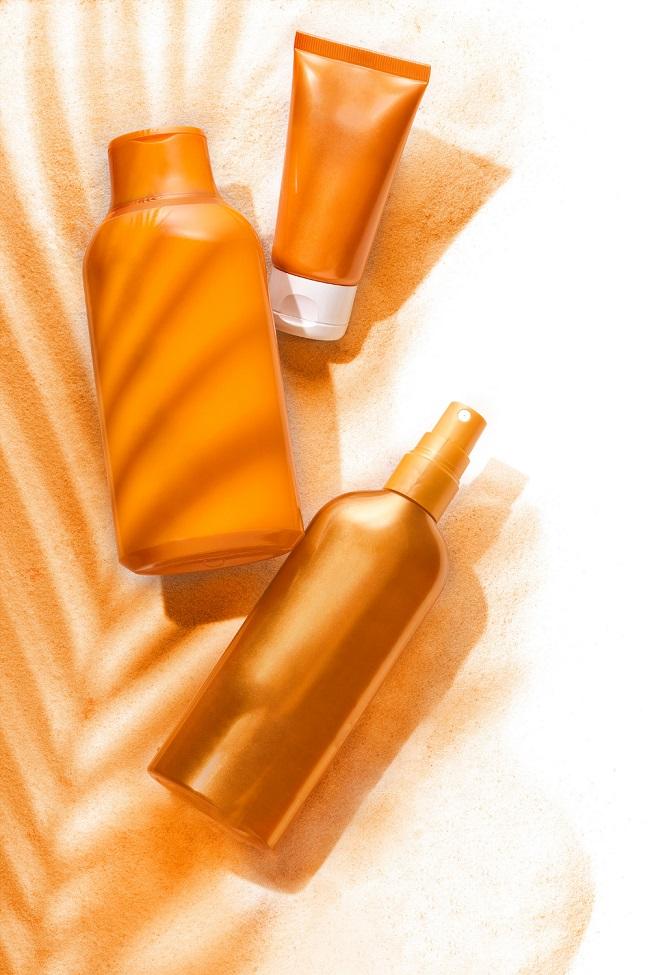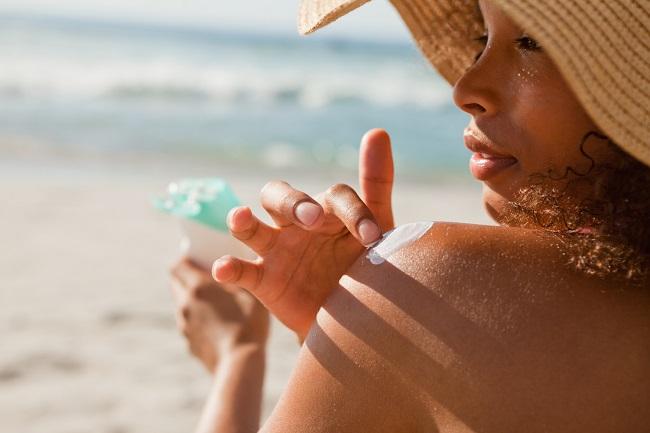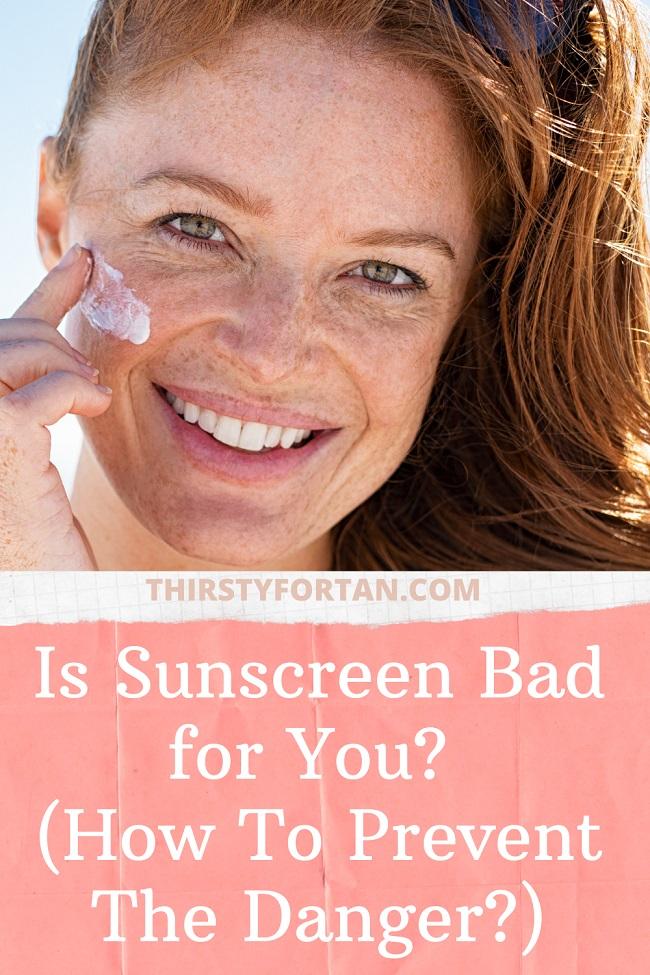If you know much about skincare, and looking after your body, you’ll know that the sun and it’s strong UV rays can be harmful to you in a vast range of ways. The best way to protect yourself from this damage, as well all know, is through the use of sunscreen, but is this bad for you too?
With all the scientific research and other things which go on nowadays, it’s hard to know what really is good for our health in the long term, so read on to find out the facts about whether or not sunscreen is safe for you to use, and when.
What is a sunscreen?
Obviously, most people know what sunscreen is itself, but there is a more scientific explanation behind your regular white cream in a tube situation. There are lots of things you may never have known about sunscreens, what they are, why you need them, and so on, and this information is all-important to know before finding out whether or not they’re dangerous.
Starting with the Sun, there are two types of UV rays that are emitted from it, which you should probably have heard of: UVA and UVB. Both of these types of UV rays have different wavelengths, basically meaning that they interact with you, your skin, and various products in different ways, and they have specific features that tell them apart.
Sunscreen is the product that protects you from the UV rays emitted by the Sun by creating a ‘barrier’ on the surface of your skin which filters out any of these rays. Sunscreens are incredibly important in order to ensure that you are keeping safe whilst outside, rain or shine because, as long as the Sun is out, there is still a potential risk that you could suffer damage from it.
When you buy a sunscreen, the SPF of your product tells you how much it is going to protect you from the UVB rays, but that doesn’t say anything about the UVA rays, which is why you need to find one which is labeled as ‘broad-spectrum’ or has a separate UVA rating somewhere on the packaging. This way, you’ll know that your skin is definitely being completely protected from the Sun.
Sun protection comes in a vast range of different products, and it is something which should definitely be implemented into your daily routine to protect yourself from so many things, including melanoma, the most fatal skin cancer (it is believed that around 9 out of 10 cases of melanoma could be prevented by regular sunscreen use), premature aging, sunburn and so many more.
What are the main ingredients that most sunscreens contain?
Now that you know a bit about sunscreens and how they work, you can move onto the ingredients that actually make them work, as these clearly play a huge role in protecting you and could sometimes also be a cause for concern. It’s also good to know about the different ingredients in cosmetic products, and how they work or what benefits they have, as it allows you to look out for specific things on an ingredient list, and choose a product which will suit you best depending on what’s in it.
There are two different types of sunscreen, known as mineral and chemical, which we’ll talk about more later, but they are made up of different ingredients in order to function the way they do. There is a lot of debate over which is more effective in terms of their overall use, as well as their formula composition.
In terms of mineral sunscreens, you can expect to find one of two main ingredients acting as the base of the product to protect your skin. These are zinc oxide and titanium dioxide, both of which are extremely safe for use on the skin and are well-recognized for their sun protection capabilities. If you are buying a mineral sunscreen, these are ingredients you should definitely look out for on the packaging or ingredient list.
When it comes to chemical sunscreens, there are many more ingredients that you can find as the base of the product than compared to mineral ones. If you are looking for some popular ingredients, here’s a list of those found in chemical solutions, and whether they’re good for you:
- Octinoxate – this is good for absorbing UVB rays but can have negative impacts on coral reefs and marine life.
- PABA (para-aminobenzoic acid) – this strong UVB filter is effective but studies have shown that it can be toxic for animals, meaning its use is limited to certain concentrations and banned completely in some areas.
- Tinosorb S and M – this can protect you from both UVA and UVB rays, and is very popular in European products, but is banned in the US as there is not much information about its potential effects at the moment.
- Avobenzone – although this ingredient destabilizes in light when on its own, it can be combined with other ingredients to filter out UVA rays in sunscreens but can only be used in small percentages.
- Mexoryl SX – on its own, this can block out UVA rays and is safe for use to prevent sun damage. When used with avobenzone, it’s even more effective and creates an advanced formula.
Can sunscreens be dangerous?
There are so many different sunscreen formulas and protective measures available for purchase, so ‘sun care’ covers a really broad range of products, making it difficult to determine whether or not a certain product is dangerous, but you can still look at sunscreens in general.
As mentioned, there are two different types of sunscreens: mineral and chemical, which are both effective for filtering out UV rays, but do so using different ingredients and mechanisms. Mineral sunscreens form a physical barrier on the surface of the skin to protect it from any UV rays which come that way and are effective as soon as they’re applied. This makes mineral sunscreens really easy to use, and practically fail-proof.
On the other hand, chemical sunscreens are absorbed into the skin and they work deeper inside than the surface, where mineral sunscreens work. Chemical sunscreens allow the UV rays to penetrate the layers of the skin until they reach the product, and this then converts the UV rays into heat, which is released from the body. One thing worth noting is that chemical sunscreens take 20 minutes to soak in before becoming effective, so take some planning and patience if you want to get the best protection out of them.
Because of their fast-acting formula, mineral sunscreens are deemed as ‘safer’, primarily because there is no danger of skin damage during the time in which you are waiting for it to absorb, as there is no waiting time necessary. It is also believed that they’re better for you because they don’t allow the UV rays to get into your skin in the first place and protect you before there’s even any danger.
Whereas chemical sunscreens, which do come with a short waiting time, are seen as potentially ‘dangerous’ for a variety of reasons, the first one being the time it takes for the product to absorb. The problem with this is that it requires careful planning in order to allow yourself enough time to let the product sink into your skin before exposing yourself to the Sun, and this is time which most people won’t wait for or may not even be aware of. This, in turn, means that for the first 20 minutes after each application you won’t be protected.
It should also be noted that, because chemical sunscreens ‘work’ to convert the UV rays into heat, their effectiveness can be eventually worn off after extended exposure, so you need to re-apply them regularly.
Another reason why chemical sunscreen can be dangerous is because of the lack of knowledge about it. Just like any cosmetic product, it’s much more reassuring (and much safer) to know a lot about it before actually putting it into practical use. While there may not be definitive proof that sunscreens are dangerous, there also isn’t solid evidence to prove that they’re not.
At the moment, lots of research is going into the use of nanoparticles, which are very minuscule particles which make up products and have lots of potential use in the future of the beauty and cosmetic industry. The idea of nanoparticles is that they can be easily absorbed into the skin, which is what you want from a chemical sunscreen, but this also opens up the opportunity for them to be absorbed into the bloodstream, which isn’t as positive. With little knowledge about these scientific ventures, there’s nothing to say about how safe they could be.
If you read about the ingredients above, you’ll see that some of them are a little unreliable, or difficult to stabilise which also displays some uncertainty. Nevertheless, sunscreens aren’t always dangerous, and there are reasons why.
In a much shorter, simplified version, there is lots of uncertainty in the scientific world when it comes to sunscreens, as there are lots of new things which we are determined to make possible, but some people may argue we are trying to make them happen too fast. However, there are also so many things we do know about sunscreens, and everything which has had its thorough research has been named safe for use. If you’re worried about your sunscreen, and how you can make sure it’s safe for you to use, carry on reading.
Also read:
Does Sunscreen Work Under Makeup? (How To Apply It)
Does Sunscreen Block Vitamin D? (Explained)
How can you prevent sunscreens from becoming dangerous?
So, we’ve just seen all the potentially negative effects that sunscreen can have, but it’s important to remember that there are also so many good, evident things that we know, too. And luckily, there are ways you can be certain that you are staying safe and that your sunscreen is 100% safe for you to use on a regular basis.
Here is a list of things you can do to ensure your sunscreen is safe:
- Use a mineral sunscreen: if you noticed anything about the section above, you’ll have seen that most of the potentially negative effects only applied to chemical sunscreens so, if you use a mineral sunscreen, you’ll have much better peace of mind that it’s good. If you’re buying sunscreen and you’re not sure how to distinguish between the two types, always feel free to look up some recommendations online, or ask someone in the shop!
- Use products which have FDA-approved ingredients: while it can seem like a lot of effort for such a small thing, if you’re really worried about the ingredients in your sunscreen, you can always look them up online to find out facts about them. If it’s possible, finding out if they’re FDA approved is your best option, as this judgment is based solely on scientific research, and the FDA does not approve anything which doesn’t have enough information yet.
- Wait for some time after applying your sunscreen: if you still decide to use a chemical sunscreen (which is totally okay – it’s up to you!), the best thing you can do is wait at least 20 minutes after applying it before going outside or exposing yourself to any sunlight. This way, you’ll know that you have allowed enough time for the product to get to work, and there is much less danger of your skin becoming damaged.
- Re-apply the cream regularly: as mentioned earlier, chemical sunscreens can often become ineffective after a long time in the Sun, as they work to convert the UV rays, and this can eventually ‘wear them out’. As long as you re-apply your sunscreen regularly, you can be sure that you aren’t caught out by this. Also, make sure to re-apply your sunscreen every time you come out of any water, as this could have washed the product off your skin.
- 2-fluid ounces of Neutrogena Sheer Zinc Face Dry-Touch Sunscreen Lotion with Broad Spectrum SPF 50 provides superior protection against aging UVA and burning UVB rays to help prevent sunburn
- Specially formulated water-resistant face sunscreen is made with naturally-sourced 100% zinc oxide and features Dry-Touch technology to help ensure it dries with a non-greasy finish
- Free Of: This Coppertone sunscreen lotion SPF 50 with Zinc Oxide is free of oxybenzone, octinoxate, PABA, parabens, dyes and fragrance
- Soothing Formula: Coppertone body sunscreen SPF 50 made with 100% naturally sourced Zinc Oxide plus nourishing botanical extracts (tea leaf, sea kelp and lotus extract) to calm and soothe skin
- We love the reef - to help protect delicate coral reefs, Blue Lizard Sensitive sunscreen contains no oxybenzone or Octinoxate
- Mineral sunscreen, no chemical active ingredients - protects your skin by acting like thousands of tiny mirrors that reflect UV rays away before they enter your body
If you click Buy on Amazon and make a purchase, I'll earn a small commission at no additional cost to you.
Final thoughts
Although there are some reasons why you might be skeptical about the use of sunscreens, especially chemical ones, you shouldn’t get too worried about it, as these things are only precautions. If you are worried about the potentially negative impacts of the use of your sunscreen, just follow the steps listed above to ensure that you are keeping safe, and you should be fine!







